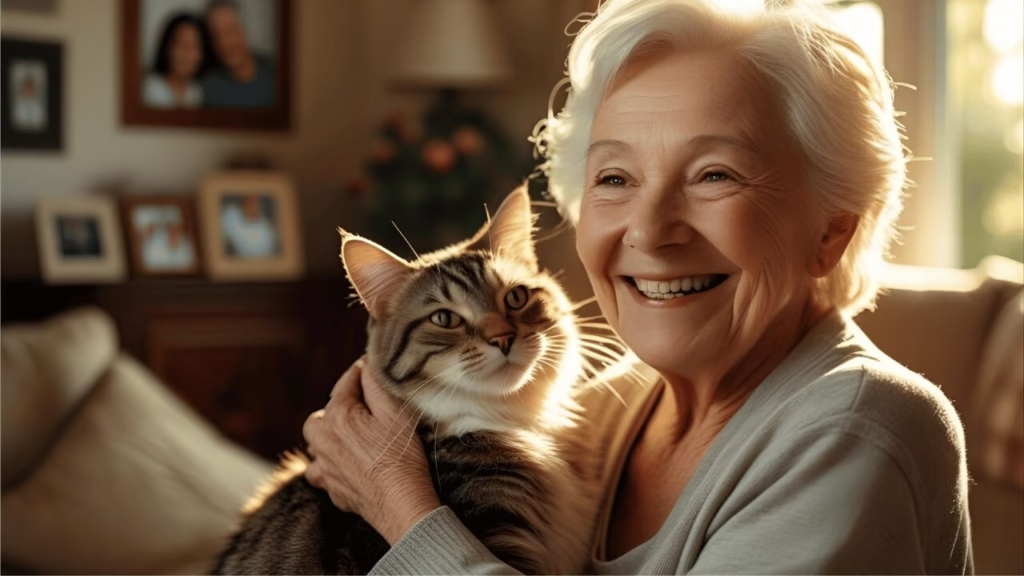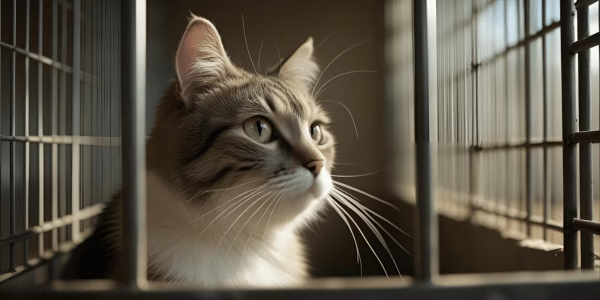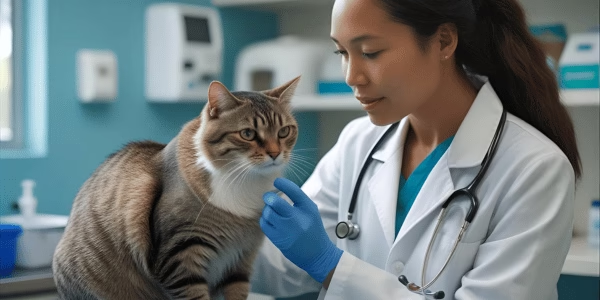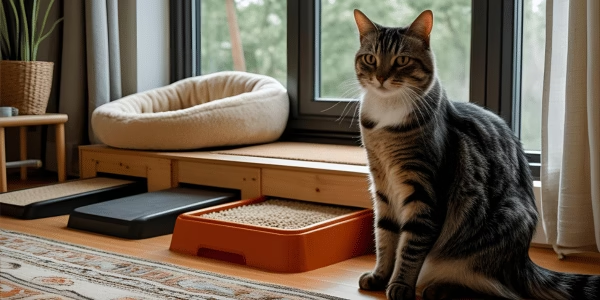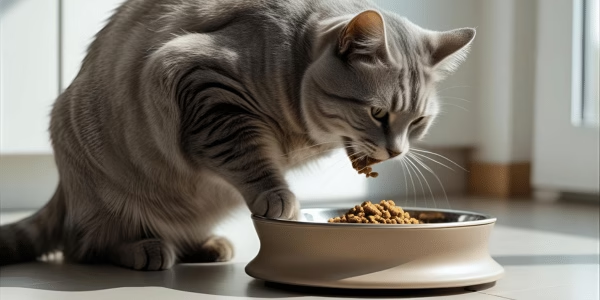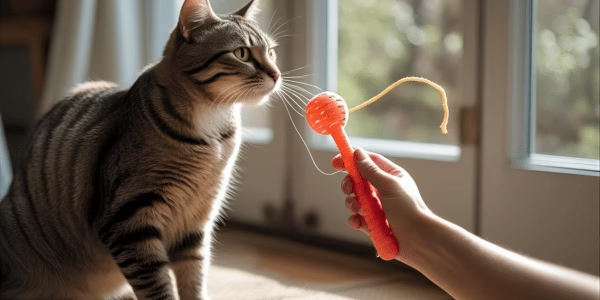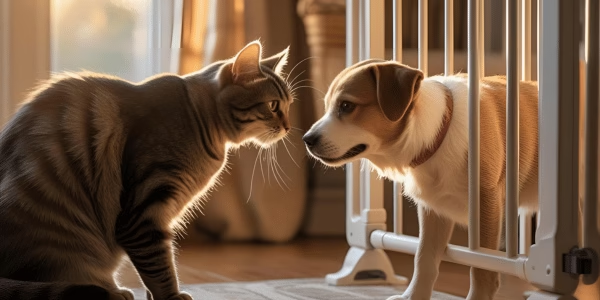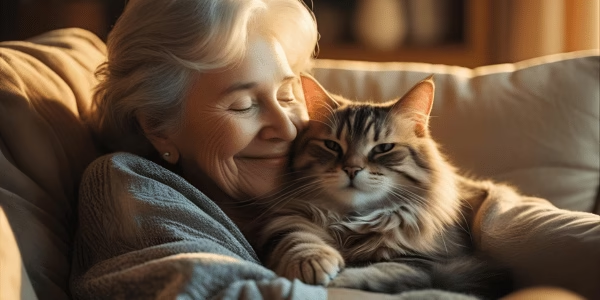Adopting a senior cat can be one of the most rewarding experiences for any animal lover. While kittens often steal the spotlight, senior cats—typically defined as 7 years or older—are frequently overlooked in shelters, despite being just as loving and deserving of a forever home. Whether you’re a first-time cat parent or a seasoned pet owner ready to give a senior feline a soft landing, knowing what to expect and how to prepare can make all the difference in their golden years.
In this in-depth guide, you’ll learn what adopting a senior cat really means, how to get your home ready, and the best ways to ensure a smooth transition for your new companion.
For a Complete Guide, check out our Complete Cat Adoption Guide article.
Why Adopting a Senior Cat Is a Beautiful Choice
1. They’re Often Overlooked in Shelters
According to the ASPCA, senior cats tend to wait much longer for adoption than kittens. Many are surrendered due to their owner’s health or housing changes, not because of behavioral issues.
2. Their Personalities Are Fully Formed
When you adopt a senior cat, you know exactly what you’re getting. Their behavior, temperament, and energy levels are predictable—whether they’re snuggly, independent, chatty, or quiet.
3. Training Is Usually Done
Most senior cats are litter-trained and understand household norms. You won’t be waking up at 3 AM to a cat scaling your drapes or chewing your charging cords.
4. Ideal for Calm or Busy Households
Senior cats fit beautifully into many types of homes—from single professionals to families with older children or retirees. They’re often content with their own space and happy to relax quietly by your side.
Check out our article: Benefits of Adopting a Senior Cat
What to Expect When You Bring Home a Senior Cat
1. Adjustment Takes Time
Senior cats can be cautious in new environments. Some may hide for days or seem uninterested in social interaction while they scope out their surroundings and feel safe.
What you can do:
- Set up a quiet room with litter, food, water, and bedding
- Avoid loud noises or sudden movements
- Speak softly and let them initiate contact
2. Possible Health Concerns
Some senior cats come with manageable health conditions like dental disease, kidney issues, or arthritis. Reputable shelters will usually disclose known medical histories, but it’s important to be proactive with vet care.
Common Senior Cat Health Issues:
| Condition | Symptoms | Management |
| Arthritis | Limping, reluctance to jump | Joint supplements, orthopedic beds |
| Chronic kidney disease | Increased thirst/urination, weight loss | Prescription diet, hydration management |
| Dental disease | Bad breath, difficulty eating | Dental care, softer food, regular cleanings |
| Hyperthyroidism | Hyperactivity, weight loss | Medication or radioactive iodine therapy |
Source: Cornell Feline Health Center
How to Prepare Your Home Before Adoption
1. Make Your Home Senior-Cat Friendly
Older cats may have mobility challenges, so create a comfortable, safe space that’s easy to navigate.
Essentials to Set Up:
- Low-sided litter box
- Non-slip rugs or floor mats
- Soft, warm bedding in quiet corners
- Elevated bowls or feeding stands
- Ramps or stairs to help them reach furniture
2. Schedule a Vet Appointment
Book a wellness check as soon as you adopt. Even if the shelter recently provided care, your vet should perform a full exam and run senior blood panels to create a health baseline.
Ask your vet about:
- Dental care needs
- Arthritis or joint pain
- Kidney and liver function
- Senior-specific vaccination schedules
3. Choose the Right Diet
Older cats need tailored nutrition. Look for high-protein, low-phosphorus options with fewer calories to support aging joints, maintain muscle mass, and protect kidney function.
Recommended Senior Cat Foods:
- Hill’s Science Diet Adult 7+
- Royal Canin Aging 12+
- Wellness Complete Health Senior
Always transition to new food slowly over 5–7 days to avoid digestive upset.
Building a Bond with Your Senior Cat
1. Patience Pays Off
Your new cat may have gone through upheaval—losing a longtime home or owner. Let them come to you. Sit quietly in the room, speak gently, and offer treats without pressure.
2. Use Familiar Scents
Place a T-shirt or blanket that smells like you near their bed to build trust through scent. You can also rub a sock on their cheeks and place it around your home to spread their scent and make them feel safe.
3. Keep Routines Consistent
Cats are creatures of habit. Feed, groom, and play at the same times each day to build comfort and predictability.
Enrichment and Comfort for Senior Cats
A senior cat might not leap across furniture anymore, but they still need stimulation to stay mentally and emotionally healthy.
Enrichment Tools:
- Wand toys for light, slow play
- Puzzle feeders to challenge their minds
- Heated cat beds to ease arthritis pain
- Window perches for birdwatching
Recommended Toy: Catstages Tower of Tracks — low-impact and entertaining for older cats.
Enrichment for Senior Cats: More Than Just Play
Mental and sensory enrichment is essential to prevent boredom and cognitive decline in senior cats. Even simple stimulation can improve their quality of life significantly.
More Enrichment Ideas:
- Scent exploration: Introduce cat-safe herbs like silvervine or valerian.
- Food foraging: Use the Doc & Phoebe Indoor Hunting Feeder to simulate natural hunting.
- Soothing soundscapes: Try playlists from Spotify for Pets to help your cat relax.
- Cat TV: Let them watch birds or fish videos on YouTube—many cats enjoy visual stimulation even in later years.
Even 15 minutes of gentle daily play can enhance your cat’s cognitive health and strengthen your bond.
Medical Monitoring and Long-Term Care
As your cat ages, preventative care becomes even more important. Schedule routine checkups and monitor for any behavioral or physical changes.
Suggested Vet Visit Schedule:
| Cat’s Age | Vet Visit Frequency | What to Monitor |
| 7–10 years | Annually | Early signs of joint or dental issues |
| 10–13 years | Every 6–12 months | Weight changes, thyroid/kidney tests |
| 13+ years | Every 6 months | Pain management, cognitive changes |
Resource: American Association of Feline Practitioners (AAFP)
Multi-Pet Households: Introducing a Senior Cat
If you already have pets, consider the temperament and history of your new senior cat. Many have lived as only pets or may feel overwhelmed by high-energy animals.
Tips for Introducing Pets:
- Swap bedding to share scents before meeting.
- Use baby gates or cracked doors to allow visual contact.
- Watch for body language—ears back, growling, or hiding mean it’s time to slow down.
- Use Feliway Classic diffusers to reduce stress and ease the transition.
Let the cats set the pace. It could take weeks or even months for full acceptance.
Emotional Rewards of Adopting a Senior Cat
While kittens are fun and playful, there’s something deeply moving about offering a soft place for a senior cat to land. Many adopters describe their bond with an older cat as instant and intensely rewarding.
Real-Life Impact:
- A Petfinder survey found 72% of adopters felt a stronger emotional connection with their senior pets than younger ones.
- People report signs of “gratitude,” such as headbutts, constant companionship, and slow blinks.
Whether you’re coping with your own loss or simply want a peaceful companion, a senior cat can bring healing and meaning into your life.
Final Thoughts: Why Love Has No Age Limit
Adopting a senior cat is an act of compassion and love. You’re not just giving them a home—you’re giving them dignity, comfort, and peace in their golden years. In return, you’ll gain a gentle soul whose loyalty and affection are often unmatched.
The truth is, when you adopt a senior cat, you’re not just changing their life. They’ll change yours in ways you never expected.

